Looking for UPTET Syllabus and Exam Pattern? Then you are at the right place.
You can download UPTET Syllabus in Hindi / English and Exam Pattern in PDF.
You can find UPTET Syllabus Paper 1 and UPTET Paper 2 Syllabus with Exam Pattern in this post.
Download UPTET Syllabus in PDF.
UPTET Syllabus 2021 Overview
| Exam Conducting Authority | UPBEB (Uttar Pradesh Basic Education Board). |
| Exam Name | UPTET 2021. |
| UPTET Exam Date | Postponed. |
| Number of Papers (UPTET Exam) | Paper-I (Primary Level). Paper-II (Elementary Level). |
| Level of Examination (Difficulty Level) | State-level. |
| Type of Questions | Multiple Choice Questions (MCQs). |
| Total number of questions in each paper | 150. |
| Marks of each paper | 150. |
| UPTET Exam Mode | Offline (Pen and Paper) |
| UPTET Exam 2021 Marking Scheme | # One Mark for Each Correct Answer.# There will be no negative marking for wrong answers. |
| Time Allotted | 2 hours and 30 minutes. |
| Language of the exam | Bilingual (English and Hindi). |
| Official website | https://updeled.gov.in/ |
UPTET Syllabus for Paper I & II
UPTET 2021 is a state-level examination to select eligible candidates as teachers in government-aided schools in Uttar Pradesh (UP). See UPTET Syllabus 2021 below:
UPTET Syllabus 2021 for Paper I and Paper II has been provided in different sections.
UPTET Syllabus for Paper I (Primary Level)
Child Development and Pedagogy: 30 Questions
Child Development and Pedagogy will have two sections which consist of 30 Questions.
- Content.
- Learning and teaching.
Content
The content section will have the following syllabus:
Child development
- Meaning, the scope of child development and necessity, stages of child development, mental development, physical development, emotional development, language development – development of expressive ability, creativity, and development of creative ability.
- Basis of child development and factors influencing the – environment, inheritance (communication medium, social, Family, and school).
Meaning and Principles of learning
- Meaning of learning, its affecting factors, Influential methods of learning.
- Rules of learning – The main rules of learning of Thorndike’s and their importance in learning.
- The key principles of learning and their practical utility in classroom teaching, Skinner’s action learning theory, Principle of Thorndike’s attempt and error, Kohler’s theory of understanding or Insight, Pavlov’s relation theory of feedback, Meaning of plateau in the cause and solution, Vygotsky’s Theory of Learning Curve – Meaning and Type.
Teaching and learning methods
- Meaning and purpose of teaching, basic teaching, principles of teaching, communication, teaching methods, sources of teaching, new methods of teaching (approach), Teaching learning strategies, and basic skills of teaching.
Inclusive education- guidance and counseling
- Educational inclusion means identity, resolution, type, eg: language, excluded class, region, religion, caste, color, gender, physical skills (hearing impaired, visually impaired, and speech/bone impaired), and mental efficiency.
- Observations required for inclusion, Equipment, methods, materials, and TLM.
- Techniques for testing the learning of inclusive children and Necessary tools.
- Special teaching methods for including children. Such as – Braille script etc.
- Guidance and Counseling for Inclusive Children: Meaning, Purpose, Methods, Requirements, Type, and Area.
- Importance of guidance and counseling in child learning
Departments and Institutions that are supporting in the consultation:
- Divisional Psychology Centre (at Divisional Level).
- Trained Diet Mentor in District Education and Training Institute.
- Community and school support committees.
- Psychology Uttar Pradesh, Allahabad.
- District hospital.
- Supervision and inspection system.
- Government and NGOs.
Learning and Teaching
- Basic processes of learning and teaching, learning as a social activity, learning strategies of children, and social context of learning.
- How do children think and learn? how and why do children ‘fail’ to achieve success in school performance?
- An alternative concept of learning in children and. understanding child errors as important steps in the learning process.
- Children as problem solvers and scientific investigators.
- Motivation and learning.
- Sense and feelings.
- Factors contributing to learning – private and environmental.
Language I: 30 Questions
Language I will consist of:
- Hindi as a subject matter.
- Hindi Pedagogy
Hindi (subject matter)
- हिंदी वर्णमाला (स्वर, व्यंजन)
- वाक्य रचना
- हिंदी भाषा की सभी ध्वनियों, वर्णों अनुस्वार एव चन्द्रबिंदु में अंतर
- सभी प्रकार की मात्राएँ
- विलोम, समानार्थी, तुकान्त, अतुकान्त, सामान, ध्वनियों वाले शब्द
- प्रत्यय, उपसर्ग, तत्सम तद्भव व देशज, शब्दों की पहचान एव उनमें अंतर
- सन्धि – (1) स्वर सन्धि – दीर्घ सन्धि, गुण सन्धि, वृद्धि सन्धि, यण सन्धि, अयादि सन्धि (2) व्यंजन सन्धि (3) विसर्ग सन्धि
- कवियों एव लेखकों की रचनाएँ
- अपठित अनुच्छेद
- वर्णों के मेल से मात्रिक तथा अमात्रिक शब्दों की पहचान
- हिंदी की सभी ध्वनियों के पारस्परिक अंतर की जानकारी विशेष रूप से – ष, स, ब, व, ढ, ड, क्ष, छ, ण तथा न की ध्वनियाँ
- संयुक्ताक्षर एवं अनुनासिक ध्वनियों के प्रयोग से बने शब्द
- विराम चिह्नों यथा – अल्प विराम, अर्द्धविराम, पूर्णविराम, प्रश्नवाचक, विस्मयबोधक, चिह्नों का प्रयोग
- वचन, लिंग एव काल
- लोकोक्तियाँ एव मुहावरों के अर्थ
- वाच्य, समान एव अंलकार के भेद
Hindi Pedagogy
- भाषा अध्यापन के सिद्धांत
- मौखिक और लिखित रूप में विचारों के संप्रेषण के लिए किसी भाषा के अधिगम में व्याकरण की भूमिका पर निर्णायक संदर्श
- भाषा कौशल
- अध्यापन – अधिगम सामग्रियां: पाठ्यपुस्तक, मल्टी मीडिया सामग्री, कक्षा का बहुभाषायी संसाधन
- अधिगम और अर्जन
- सुनने और बोलने की भूमिका: भाषा का कार्य तथा बालक इसे किस प्रकार एक उपकरण के रूप में प्रयोग करते है
- एक भिंन कक्षा में भाषा पढाने की चुनौतियाँ भाषा की कठिनाइयाँ त्रुटिया और विकार
- भाषा बोधगम्यता और प्रवीणता का मुल्यांकन करना: बोलना, सुनना, पढना, लिखना
- उपचारात्मक अध्यापन
Language II (English/ Urdu/ Sanskrit)
Language II will consist of:
- English.
- Sanskrit.
- Urdu.
English
- The sentence
(A) Subject and predicate.
(B) Kind of sentences. - Tenses-Present, Past, Future.
- Punctuation.
- Active & Passive voice.
- Gender.
- Unseen Passage.
- Parts of speech: Pronoun, Kinds of Noun, Verb, Conjunction, Adverb, Preposition, Adjective.
- Articles.
- Word formation.
- Singular & Plural.
Urdu
- Meeting of the masters of the tongue.
- MukhtalifAsnaafAdab such as Afsana Murcia, Maznoom, Masnavi Dastan, etc. Praise to Ma, Amsal.
- Information about Ism, Wahid, Jamir, Moannas et cetera, Sifat, Mojkkar, Mutzadalfaz.
- Idioms, meeting JurbalAmsal.
- To understand the social and Khaliq Akbar present in the beliefs, stories, Hikayatas, and memoirs.
- Unseen passage.
- Knowledge of the famous life and poetry of famous tribes and poets.
- Masala of perfect tamarind and afflux.
- Saints (Tasbeeh and Istaara, Talmih, Maraatunzir), etc.
- MukhtalifSamajMusayal like the atmosphere of AloodgiNabrabari, TalimBaraa’mn, Adame, Tagazia.
Sanskrit
- Unseen passage.
- Unexplained feminine.
- Postpartum feminine.
- Postpartum masculine.
- Introduction to Sanskrit names of household, surroundings, family, birds, animals, household use items.
- Verb.
- Incessant.
- Numbers – Knowledge of numbers in Sanskrit.
- Gender, substitution, vowel, vowel type, anusvara, type of consonant, and nasal consonant.
- Unexplained masculine.
- Nouns.
- Unexplained neuter.
- Post masculine.
- Postpartum feminine.
- Pronouns.
- Use of Sanskrit words for major body parts.
- Sandhi – Treaty of simple words and their separation (long treaty).
- Compositions of poets and writers.
The Teaching of Language Development
- Principles of language teaching.
- Decisive perspective on the role of the grammar of learning of a language for communicating ideas verbally and in writing.
- Language skills.
- Teaching-learning materials: syllabus, multi-material, classroom multilingual resources.
- Learning and acquisition.
- Role of listening and speaking: Language work and how children use it as a tool.
- Challenges of teaching language in a different classroom: language difficulties, errors, and disorders.
- Assessing language comprehension and proficiency: speaking, listening, reading, and writing.
- Remedial teaching.
Mathematics: 30 Questions
Content
- Minimum Commonwealth and Maximum Commonwealth.
- Decimal – addition, subtraction, property, division.
- Percent.
- Simple interest.
- Money (money – money).
- Perimeter – Triangle, import, square, quadrilateral.
- Figures.
- Area – Rectangle, Square.
- Presentation and formulation of data.
- Addition, subtraction, property, division of numbers, and numbers.
- Addition, subtraction, property, division of fractions.
- Unitary rule.
- Profit loss.
- Geometry – Geometric shapes and pages, angles, triangles, circles.
- Measurement – time, weight, capacity, length, and temperature.
- Calendar.
- Volume, held – cube, cavity.
- Railway or bus timetable.
Teaching Issues
- Place of mathematics in the curriculum.
- Community mathematics.
- Teaching problems.
- Clinical and remedial teaching.
- Understanding the nature of mathematical/logical thinking, the child’s thinking and reasoning patterns, and the meaning and learning strategies.
- Math language.
- Evaluation through formal and informal methods.
- Relevant aspects of error analysis and learning and teaching.
- Environmental Studies (Science, History, Geography, Civics, and Environment): 30 Questions
Content
- Food, health, and hygiene.
- Trees and plants.
- Fair.
- Water.
- Sports and sportsmanship.
- Our region – rivers, mountains, stones, forests, traffic.
- Governance system: local self-government, village-panchayat, district panchayat, Nagar-panchayat, municipality, district-administration, municipal corporation, state’s governance, administrative, judiciary, executive, national and national-symbols, voting, national Unity.
- Family.
- Accommodation.
- Our environment.
- Individuals and businesses associated with the local profession.
- Traffic and communication.
- India – rivers, plateaus, forests, traffic, continents, and oceans.
- Constitution.
- Environment-need, importance, environment-protection- need, and utility, environment protection, social responsibility towards the environment, schemes operated for environmental protection.
Teaching Related Issues
- Importance of environmental studies, integrated environmental studies.
- Learning principle.
- Approach to present retention.
- Experiment / practical work.
- A continuous comprehensive evaluation.
- Concept and coverage of environmental studies.
- Environmental Studies and environmental education.
- The scope and relation of science and social science.
- Activity.
- Discussion.
- Problems.
UPTET Exam Syllabus for Paper-II (Class VI to VIII)
UPTET Exam Syllabus for Paper-II is given below:
Child Development and Learning Methods: 30 Questions
Content
Basis of child development and factors influencing the – environment, inheritance (communication medium, Family, school, and social).
The meaning, necessity, and scope of child development, stages of child development, mental development, language development, physical development, emotional development – development of expressive ability, creativity, and development of the creative ability.
Meaning and Principles of Learning
- Rules of learning – The main rules of learning of the Thornadikes and their importance in learning.
- Effective methods of learning, influence the meaning of learning (learning).
- The key principles of learning and their practical utility in classroom teaching, Thorndike’s theory of love and error, Skinner’s introduced learning theory, Thorndike’s attempt and theory and their practical utility in classroom teaching, Pavlov’s relation theory of response, Kohler’s curve – Meaning and type, plateau meaning in learning and cause and resolution.
Teaching and Learning Disciplines
- Meaning and purpose of teaching, sources of teaching, communication, teaching methods, principles of teaching, basic teaching, new methods of learning (approach), and basic skills of teaching.
Inclusive Education Guidance and Counseling
- Educational inclusion means identity, resolution, type, eg: language, excluded class, region, religion, caste, color, gender, physical skills (hearing impaired, visually impaired, and speech/bone impaired), and mental efficiency.
- Observations required for inclusion, Equipment, methods, materials, and TLM.
- Techniques for testing the learning of inclusive children and Necessary tools.
- Special teaching methods for including children. Such as – Braille script etc.
- Guidance and Counseling for Inclusive Children: Meaning, Purpose, Methods, Requirements, Type, and Area.
- Importance of guidance and counseling in child learning
Departments and Institutions that are supporting in the consultation:
- Divisional Psychology Centre (at Divisional Level).
- Trained Diet Mentor in District Education and Training Institute.
- Community and school support committees.
- Psychology Uttar Pradesh, Allahabad.
- District hospital.
- Supervision and inspection system.
- Government and NGOs.
Study and Teaching
- Basic processes of teaching and learning, children’s learning strategies, learning as a social activity, social context of learning.
- An alternative concept of learning in children, understanding child errors as important stages in the learning process.
- Motivation and learning.
- How children think and learn; how and why children ‘fail’ to achieve success in school performance.
- Child as a problem solver and a ‘scientific investigator’.
- Perception and sensations.
- Tax contributors to learning – private and environmental.
Language I: 30 Questions
Hindi (A)
Content
- Unseen passage.
- Differences between pronouns and pronouns.
- Difference between verb and verb.
- The difference in all Hindi language sounds, conjuncts, joint consonants, and lunar points.
- The distinction of the inexplicable.
- Use of different forms of “Su”.
- Identification and use of punctuation marks.
- Tatasam, Tadbhav, indigenous and foreign words.
- Word combinations.
- Idioms and proverbs.
- Treaties and differences of treaties. (Vowels, Consonants, and Excavations).
- Noun and noun distinction.
- Difference between adjectives and adjectives.
- Speech – intonation, passive voice, eloquence.
- Alphabetical, synonymous, antonym, non-synonymous, synonyms.
- Anavar, use of resonant.
- Sentence formation (simple, compound, and mixed sentences).
- Use of speech, gender, and time.
- Prefixes and attitudes.
- Compound distinctions of the compound, and types of compound.
- Verbs transitive and intransitive.
- Ornamentation (Alliteration, pun, metaphor, inspiration, exaggeration).
Teaching of language development
- Principles of language teaching.
- Role of listening and speaking: Language work and how children use it as a tool.
- Language skills.
- Teaching-learning materials: multi-material, syllabus, classroom multilingual resources.
- Learning acquisition.
- Decisive perspective on the role of the grammar of learning of a language for communicating ideas verbally and in writing.
- Challenges of teaching language in a different classroom: language difficulties, errors, and disorders.
- Assessing language comprehension and proficiency: speaking, listening, reading, and writing.
- Remedial teaching.
Language II: 30 Questions
English
Content
- Nouns and their kinds.
- Verb and its kinds.
- Adverbs and their kinds.
- Conjunction and its kinds.
- Singular and plural.
- Negative and interrogative sentences.
- Punctuation.
- Phrasal verbs.
- Parts of speech.
- Active voice and passive voice.
- Use of Homophones.
- Silent letters in words.
- Unseen passage.
- Pronoun and its kinds.
- Adjective and its kinds & degrees.
- A preposition and its kinds.
- Intersection.
- Subject and predicate.
- Masculine and feminine gender.
- Suffix with root words.
- Use of Somebody, Nobody, Anybody.
- Narration.
- Antonyms & synonyms.
- Use of request in sentences.
Language II: 30 Questions
Urdu
Content
- Knowledge of language masters of the tongue.
- To get information about the situation of the poets and their well-being by the life of the many poets and the lovers.
- Tazkiron Tanias, Ism, and its Aksam, Tzad’s deemed, Fail, Sifat, Jamir.
- Idioms, acquiring speech from JurbalAmsal.
- The political, social, and ekhalaki mainsail’s being beseeched and keep their attitude on it.
- Unseen passage.
- Understanding of MukhtalifAsnaafAdabHamd, Ghazal, Qasida, Marcia, Masnavi, Geet, etc., and their difference.
- Achieving eloquence with the help and importance of Urdu language in Mushtaraka Tehzeeb of the country.
- Information about correct tamarind and Arab.
- Knowledge of saints.
Language II: 30 Questions
Sanskrit
Content
- Sandhi – Vowels, consonants.
- Compound.
- Prefix.
- Antonyms.
- Ornamentation.
- Speech.
- Unseen Passage.
- Incessant.
- Use of gender, speech, and time.
- Synonym.
- Factor.
- Suffix.
- Pronouns.
- Metal.
- Adjectives.
- Numbers.
- Nouns.
Note:
In Nouns, you should have Knowledge of the forms of all the inflections and words of the following words:
- The word masculine.
- The word neuter.
- Inexplicable feminine.
- Postpartum masculine.
- Postpartum neuter.
- Ecomant masculine.
- Rakaranta masculine.
- The word feminine.
- Inexplicable masculine.
- Inexplicable neuter.
- Postpartum feminine.
- Ecomant feminine.
- Ecomant neuter.
Teaching of language development
- Principles of language teaching.
- Decisive perspective on the role of the grammar of learning of a language for communicating ideas verbally and in writing.
- Language skills.
- Teaching-learning materials: syllabus, multi-material, classroom multilingual resources.
- Learning and acquisition.
- Role of listening and speaking: Language work and how children use it as a tool.
- Challenges of teaching language in a different classroom: language difficulties, errors, and disorders.
- Assessing language comprehension and proficiency: speaking, listening, reading, and writing.
- Remedial teaching.
Math and Science 30 Questions
Mathematics
Contents
- Square root.
- Natural numbers, whole numbers, rational numbers.
- Identities.
- Addition, multiplication, subtraction, and division of algebraic expressions, coefficients of terms and terms of algebraic expressions, homogeneous and non-homogeneous terms, degrees of expressions, the concept of one, two, and tripartite expressions.
- Parallel lines, quadrilateral compositions, triangles.
- Tangent lines to the circle.
- Banking – Current Currency, Bills, and Cashmemo.
- Pie and bar chart, picture of unclassified data.
- Cartesian floor.
- Exponential.
- Integer, parenthesis, least common multiple, and greatest common factor.
- Cube root.
- Algebra, Concept – variables, constant numbers, powers of variable numbers.
- Square Equations, Simultaneous Equations, and Linear Equations.
- Circle and cyclic quadrilateral.
- Commercial Mathematics – Percentage, Ratio, Proportion, Tax, Profit and Loss, Simple Interest, Compound Interest, and Barter System.
- Statistics – Classification of data, pictograph, mean, median and polymer, frequency.
- Probability (probability) graph, bar diagram, and mixed bar diagram.
- Mensuration.
- Place of mathematics in the curriculum.
- Community mathematics.
- Remedial teaching.
- Nature of mathematical/logical thinking.
- Math language.
- Evaluation.
- Teaching problems.
Science
Content
- Fibers and textiles, from races to textiles and their process.
- Animal Structure and Functions.
- Cell to an organ.
- Food, health, sanitation and disease, crop production, nitrogen cycle.
- Nutrition, reproduction, beneficial plants in plants.
- Measurement.
- Magnetism.
- Energy.
- Sound.
- Lighting and lighting equipment.
- Water requirement, utility, source, quality, pollution, water conservation.
- Changes in the neighborhood, physical and chemical changes.
- Energy and heat.
- Minerals and Metals.
- Alternative sources of energy.
- Science in daily life, important discoveries, importance, anthropology, and technology.
- Living, non-living matter – fauna, classification of living organisms, classification of plants and animals based on flora and fauna, adaptation in organisms, changes in animals and plants.
- Microorganisms and their classification.
- Adolescence, disability.
- Animal nutrition.
- Respiration, excretion in organisms, beneficial animals.
- Electric current.
- Speed, Force, and Equipment.
- Computer.
- Static electricity.
- Air quality, composition, necessity, utility, the ozone layer, the greenhouse effect.
- Part, separation of substances, groups of substances, structure, and nature of substances.
- Acids, bases, salts.
- Man-made goods, glass, plastic, soap, clay.
- Carbon and its compounds.
- Natural Science/goals and objectives.
- Approach / integrated approach.
- Innovation.
- Evaluation.
- Remedial teaching.
- Nature and structure of science.
- Understanding and appreciating science.
- Observation / experiment / investigation (Method of science).
- Curriculum content/help- material (Teaching Material).
- Issues.
Social Studies and Others: – 30 Questions
Content
History
- Stone Culture, Copper Stone Culture, Vedic Culture.
- The early States of India.
- Rajput India, Non-Mauryan India, Gupta period, states of South India and Punyabhuti dynasty.
- Establishment, expansion, disintegration of Delhi Sultanate.
- The arrival of European powers in India and the establishment of the English state.
- Renaissance in India, Rise of Nationalism in India.
- Challenges of Independent India.
- Sources of knowing the history.
- India of the sixth century B.C.
- Establishment of the Mauryan Empire in India.
- The arrival of Islam in India.
- Mughal Empire, Culture, Fall.
- Expansion of Company State in India.
- Independence movement, independence, the partition of India.
Civics
- We and our society.
- Rural and urban self-government.
- Our constitution.
- Central and state governance.
- Country’s security and foreign policy.
- Citizen protection.
- Rural and urban society and living conditions.
- District administration.
- Traffic safety.
- Democracy in India.
- Global seas and India.
- Disability.
Geography
- Mapping, Four Circles of Earth, Structure – Earth’s Structure, Major Structure of Earth.
- Uttar Pradesh – Location in India, Political Department, Climate, Soil, Vegetable and Wildlife Agriculture, Mineral Industry – Business Population and Urbanization
- Major natural regions and life of the world.
- Disaster and Disaster Management.
- Earth in the Solar System, Globe – Determination of locations on Earth, Earth’s movements.
- India in the world, India’s physical form, soil, vegetation and wildlife, India’s climate, India’s economic resources, traffic, trade, and communication.
- Surface forms, changing factors. (Internal and external factors).
- Atmosphere, hydrosphere.
- Mineral Resources, Industries.
Environmental Studies
- Natural balance.
- Impact of population growth on the environment, environmental pollution.
- Environment, natural resources, and their utility.
- Use of resources.
- Waste Management, Disasters, Environmentalist, Award in the field of Environment, Environment Day, Environmental Calendar.
Home-work / Home Science
- Health and hygiene.
- Food preservation.
- Digestive diseases and common diseases.
- Learn to pronounce.
- Nutrition, diseases, and ways to avoid them, first aid.
- Pollution.
- Washing Art, Weaving Art, Home Management, Sewing Art, Cooking, and Embroidery Art.
Physical Education and Sports
- Marching, National Sports and Awards.
- Sports and our food.
- Importance of drug side effects and measures to prevent them, sports, sports management, and planning.
- Physical Education, Exercise, Yoga, and Pranayama.
- Small and Recreational Sports, International Games.
- First aid.
Music
- Melody introduction.
- Melody introduction.
- Phonetics.
- Knowledge of rhythm and rhythm in music.
- Vandana IT / Flag Anthem.
- Desh songs, country songs, bhajans.
Note:
Songs will include:
- Forest protection / plantation
- Verbal song
Horticulture and fruit conservation
- Irrigation and irrigation equipment.
- ornamental plants, Shrubs and Vines, fruit cultivation, seasonal flower cultivation, herb garden, and vegetable cultivation.
- Fruit testing, fruit preservation – jelly, jam, sauce, and pickle making.
- Crop circle.
- Seeds, Soil, Soil Formation, Soil Finishing, and Compost Fertilizer Equipment.
- Gardening, Gardening School.
- Amplification.
- Climatology.
- Procedures, Activities, and Discourse of Narrative.
- Inquiry / Empirical Evidence.
- Project Work.
- Concept and method of social study.
- Develop thoughtful thinking.
- Problems of teaching social science / social studies.
- Evaluation.
UPTET 2021 Exam Pattern
The UPTET Exam consists of two papers:
- Paper-I for Classes 1 to 5.
- Paper-II for Classes 6 to 8.
Paper-I for Classes 1 to 5 (Primary Level)
- No. of Questions: 150 Questions
- Duration: 2 hours 30 minutes
| Subject | No. of questions | Marks |
| Child Development and Pedagogy | 30 | 30 |
| Mathematics | 30 | 30 |
| Language I | 30 | 30 |
| Language II (English/ Urdu/ Sanskrit) | 30 | 30 |
| Environmental Studies | 30 | 30 |
| Total | 150 | 150 |
Paper-II for Classes 6 to 8 (Middle Level)
No. of Questions: 150 Questions.
Duration: 2 hours 30 minutes.
| Subject | No. of questions | Marks |
| Language I | 30 | 30 |
| Language II (English/ Urdu/ Sanskrit) | 30 | 30 |
| Child Development and Pedagogy | 30 | 30 |
| # Mathematics and Science (for Mathematics and science teacher) OR # Social Studies/Social Science (for social studies/social science teacher) | 60 | 60 |
| Total | 150 | 150 |
Note:
- There are four subjects that are the same in both papers ( Language I, Language II, Child Development and Pedagogy, Mathematics).
- Paper-II may be either Mathematics and Science (for mathematics and science teachers) or Social Studies and Social Science (for social studies/social science teachers).
- Each paper will have 150 questions and take 2:30 hours to complete. For a detailed UPTET Exam Pattern & Syllabus, click on the link below.
UPTET Marking Scheme 2021
- The UPTET consists of multiple-choice questions (MCQs) with four options for each question.
- There will be one mark for each correct answer.
- There is no negative marking.
Frequently Asked Questions (FAQs)
Where to Download UPTET Syllabus?
You can download UPTET Exam Syllabus from this post.
What will be the Difficulty Level of the UPTET 2021 Exam?
The level of the examination will be State-level.
Verdict
I hope you have gone through UPTET Syllabus thoroughly. Bookmark this page for future reference.

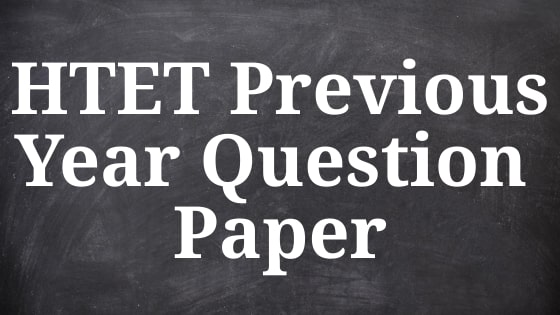
![UP Police SI Previous Year Papers [Download Practice Set]](https://kvmysore.org/wp-content/uploads/2021/11/UP-Police-SI-Previous-Year-Paper.jpeg)
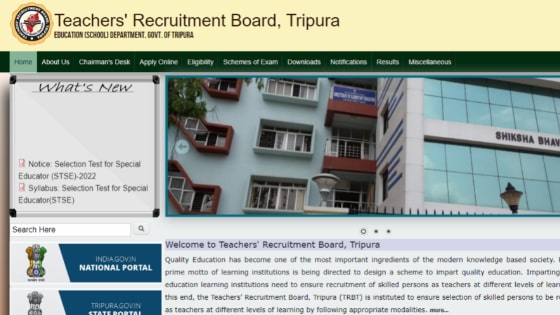
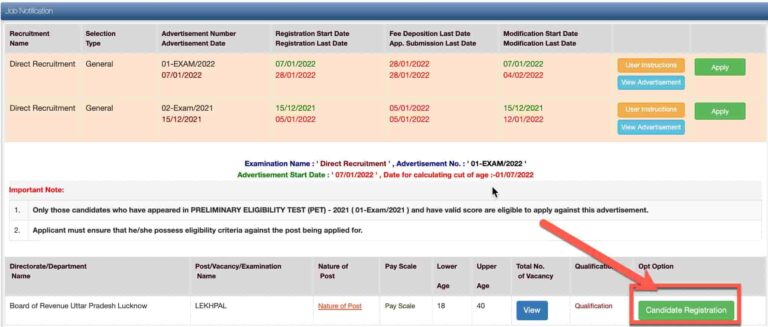
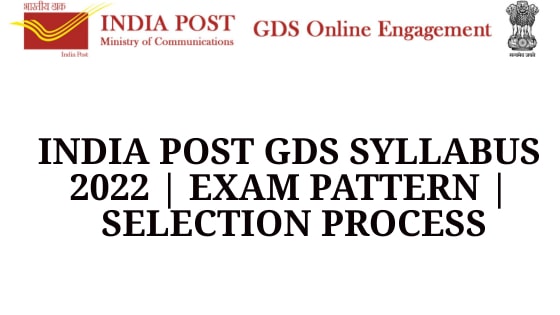
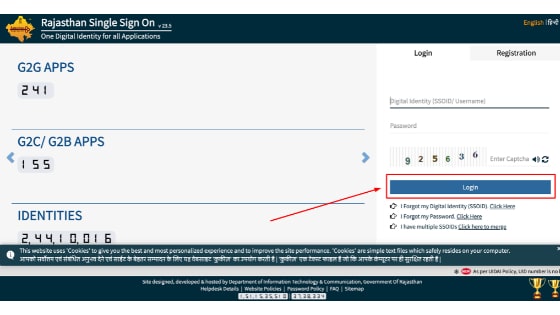
One Comment